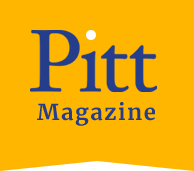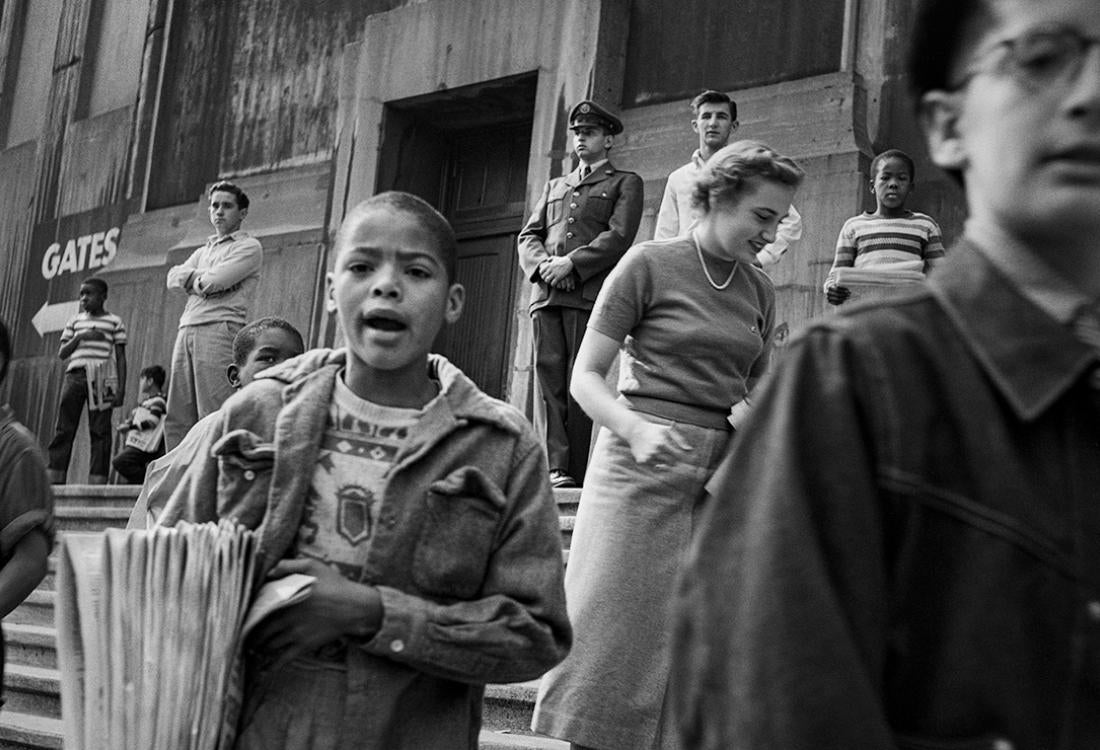
“Here, take this and go shoot the spring festival,” the upperclassman tells Michael Rosella, putting a camera around the 19-year-old’s neck.
Rosella, a member of the Pitt Photo Club, feels anointed. The older student, John Rager, kindly provides him with a 10-minute crash course on how to use the 35 mm Leica camera — among the most sophisticated of the era. The exchange gives Rosella, a quiet sophomore, a sense of self-assurance that joyfully propels him into the task.
Out on the streets of Pittsburgh’s Oakland neighborhood, Rosella turns his lens on the jubilee. He snaps images of parade spectators squinting in the sun, flowered floats cruising down Bellefield Avenue and girls dancing the cancan. He also manages to capture the buzzing energy of the annual carnival that heralds the arrival of warmer weather on campus. He shoots into the twilight.
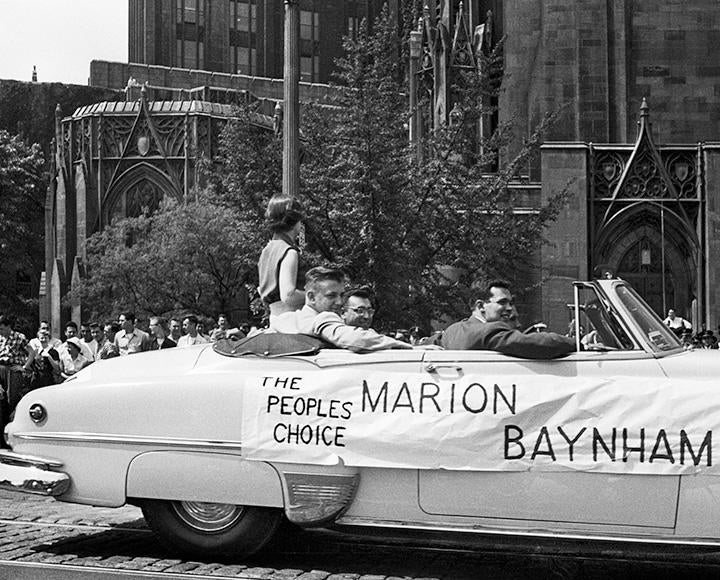
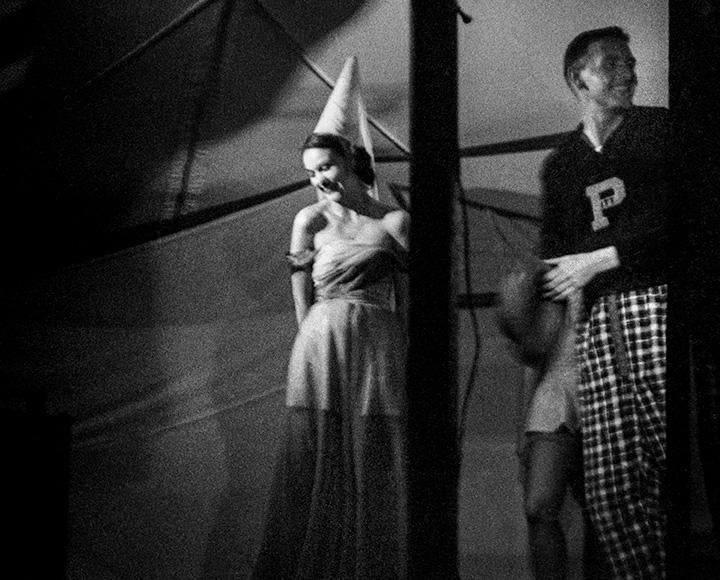
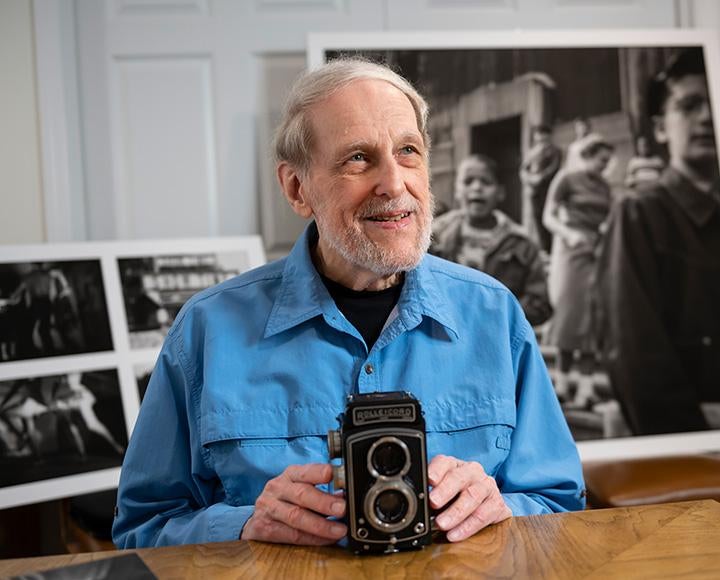
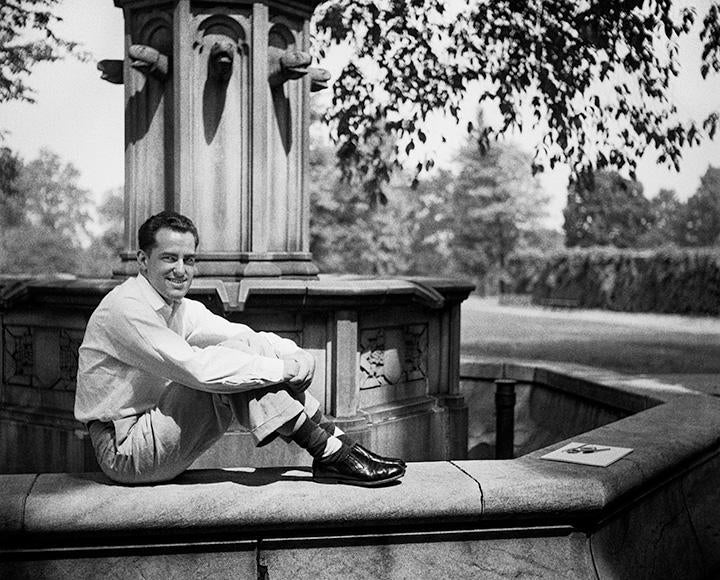
It's spring of 1953 and Rosella’s passion for photography grows faster than the grass on the lawn of the Cathedral of Learning. He follows it, camera in hand, throughout his time at the University of Pittsburgh, capturing everything from touchdown ticker tape at the old Pitt Stadium to commuters awaiting the arrival of a Fifth Avenue streetcar.
When he isn’t photographing, Rosella pursues a degree from Pitt’s School of Dental Medicine. He graduates in 1957 and goes directly into service as a naval dentist. After two years of service, he leaves the Navy and begins his own dental practice, where he is successful for more than 30 years, retiring in 1993.
Over the years, he never forgets those happy, creative years with his camera at Pitt — or the images he captured. That’s why, around 2014, Rosella decides to revisit them. He thinks they might be worth compiling into a book of photography. When others see his captivating work, they agree.
The result is “Pittsburgh Streets 1950s,” a collection of 115 black-and-white and color images Rosella produced during and shortly after his time at Pitt. Its release last fall was celebrated with a talk and reception at the Heinz History Center as part of its Italian American program.
In the book’s foreword, photographer Linda Benedict-Jones, the first curator of photography at Carnegie Museum of Art and former executive director of Pittsburgh’s Silver Eye Center for Photography, writes that Rosella’s images “provide insight not only into the way people acted and interacted, not just which carnival or parade they attended, what clothes they wore or cars they drove, but perhaps most importantly [insight] into what a young photographer found worthy of examination.”
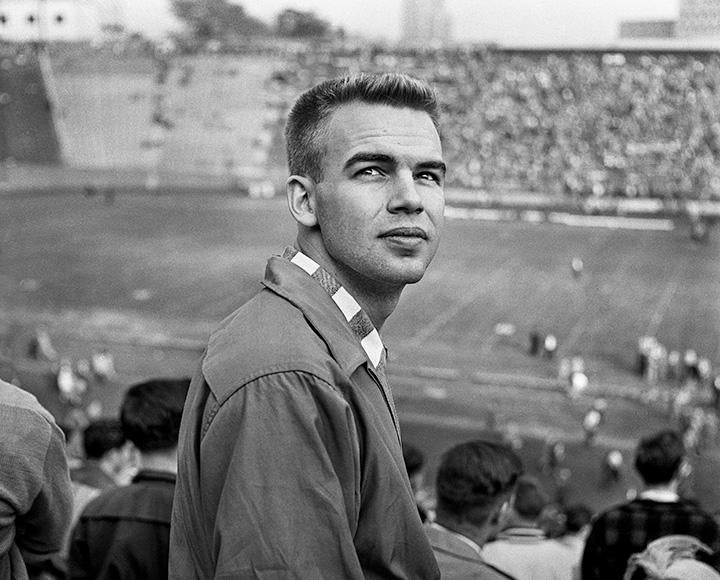
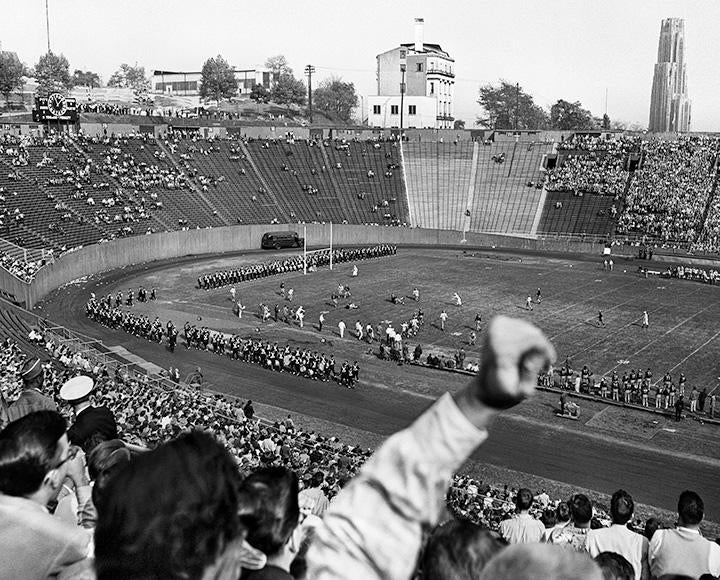
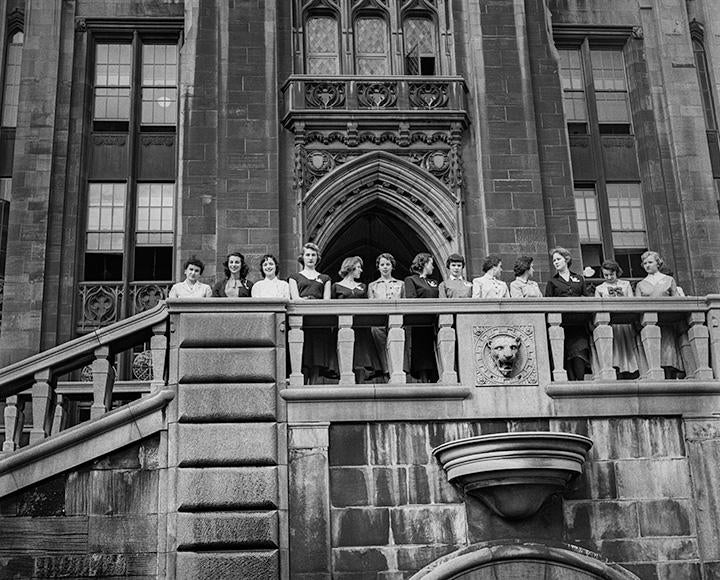
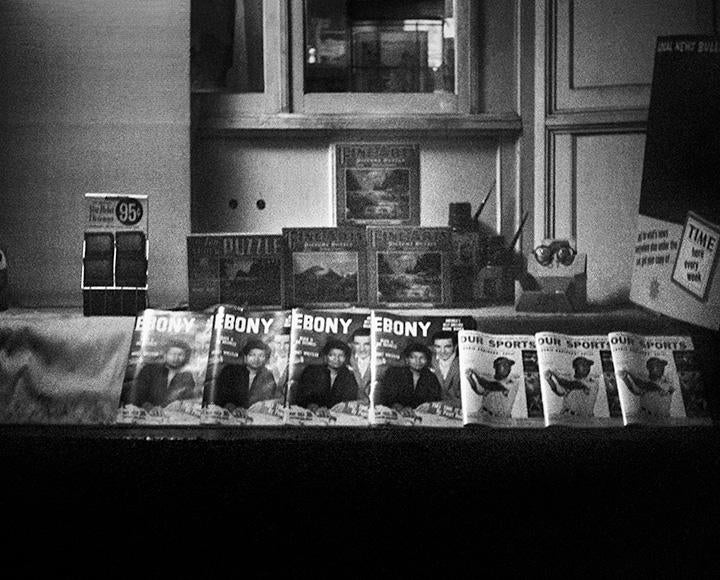
Rosella sees his photos as a love letter to Pitt and its environs, and an homage to cameras and image-making. He first got the shutterbug from his mother, a homemaker in the Pittsburgh neighborhood of Brushton who used a Kodak folding camera to capture family events. He followed her lead long after his Pitt days, pursuing photography enthusiastically in clinical dental documentation, at conference presentations and in his fine art image-making.
The photos in “Pittsburgh Streets 1950s” show the moments Rosella came into his own as a photographer. They are also a testament to a bygone era. Through Rosella’s lens, Oakland is still bordered by Pitt Stadium at one end and Forbes Field at the other. Newsboys sell papers on the street. In the University bookstore, display cases show off copies of Our Sports magazine, an issue edited by barrier-breaking African American baseball player Jackie Robinson. From the top of the Cathedral of Learning (which Rosella accessed through his part-time job as one of the building’s elevator operators), a soot-stained city flourishes over smoky hills.
Though the photos show how much has since changed on campus, they also highlight the ways the University has stayed the same. As it was in the 1950s, Pitt’s campus remains a bustling place; interwoven with its community; a place where a student with a spark of interest can find the people and resources needed to fan the flames of achievement.
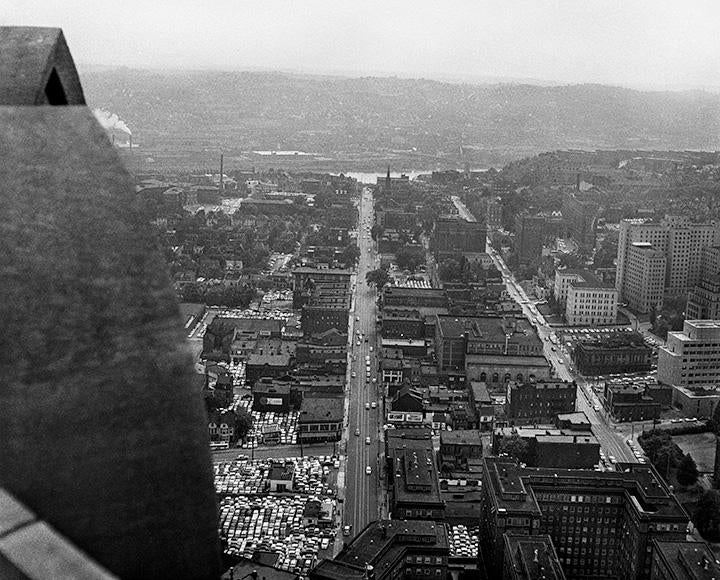
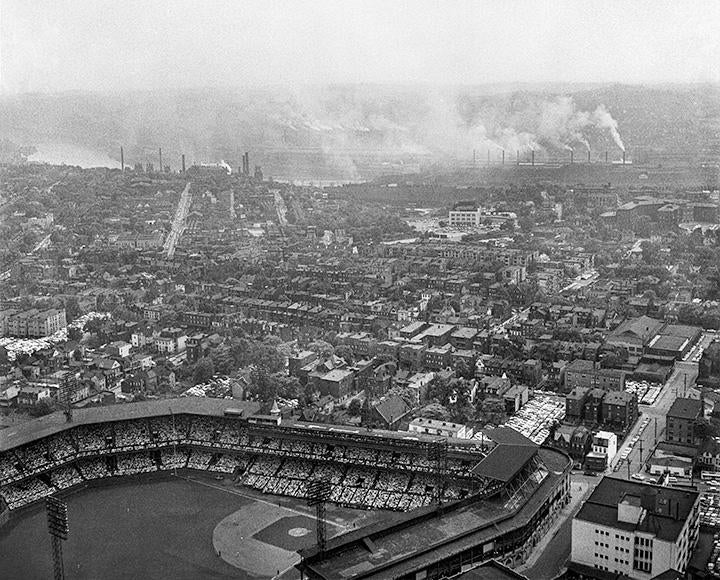
The joy these images provided Rosella years ago has never waned. He’s now 90 years old and the memory of that spring carnival, he says, “lives within my heart and soul to this day. It keeps my spirit alive.”
Most of all, he says, he’s proudest of the people-centered photos he captured. None of the 1950s images are posed.
“It’s just the people and their emotions,” he says. “It was a vibe that I was feeling. I saw it and I tried to snap it.”
Rosella's book is available at the Heinz History Center Museum Shop and on its website. A talk and book signing event is scheduled for May 18, 2024, at Pittsburgh's Silver Eye Center for Photography. For more information, visit silvereye.org



